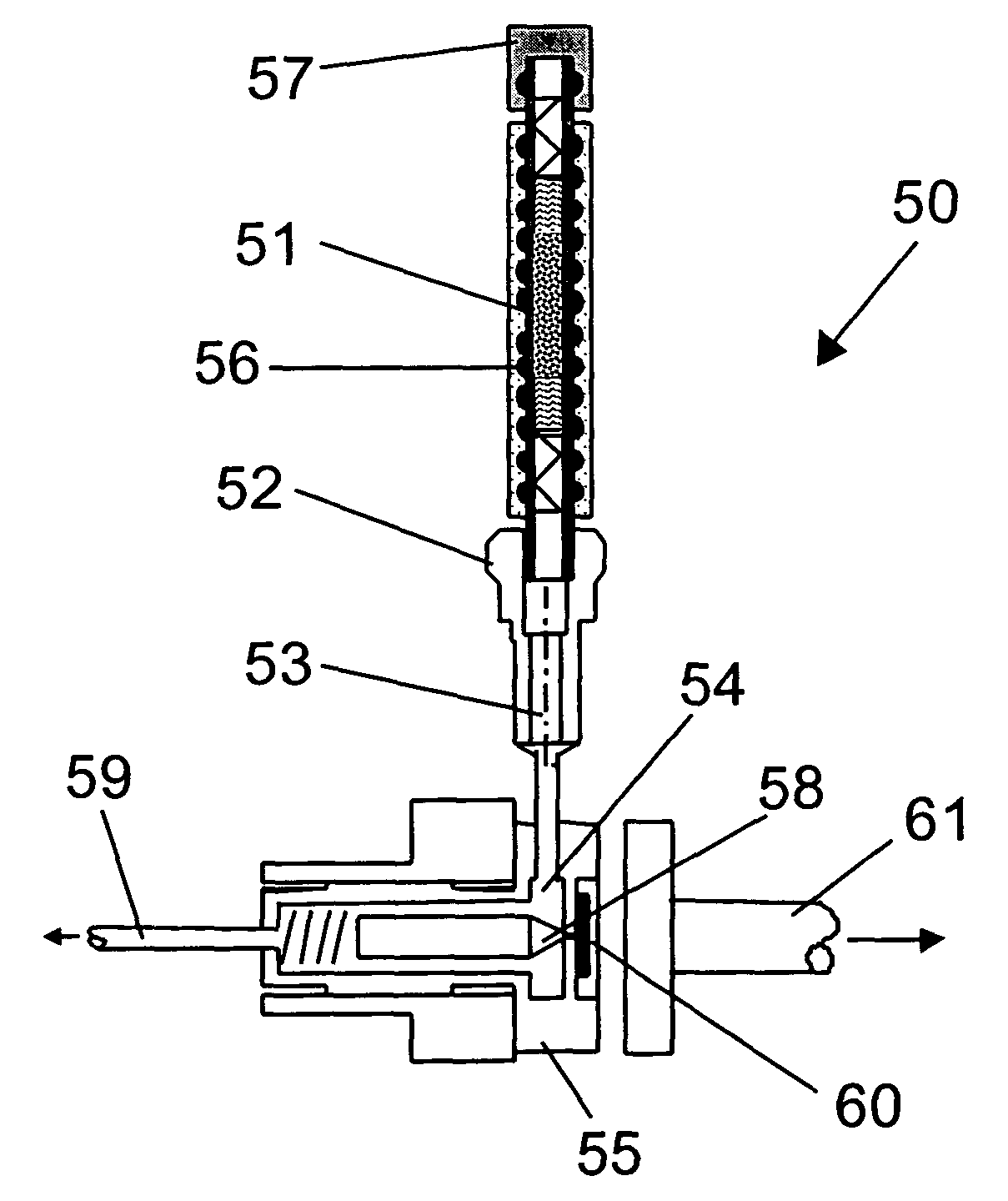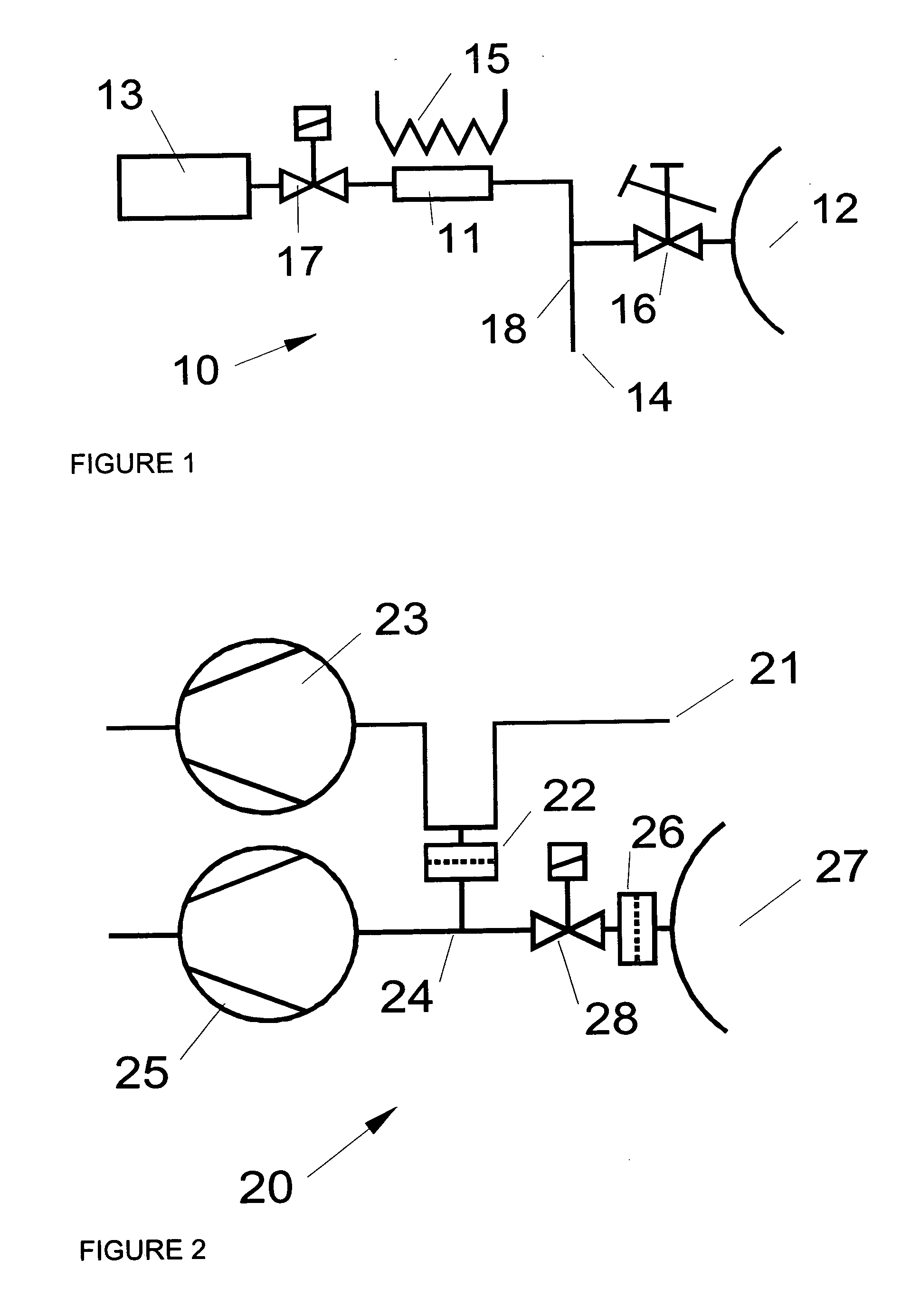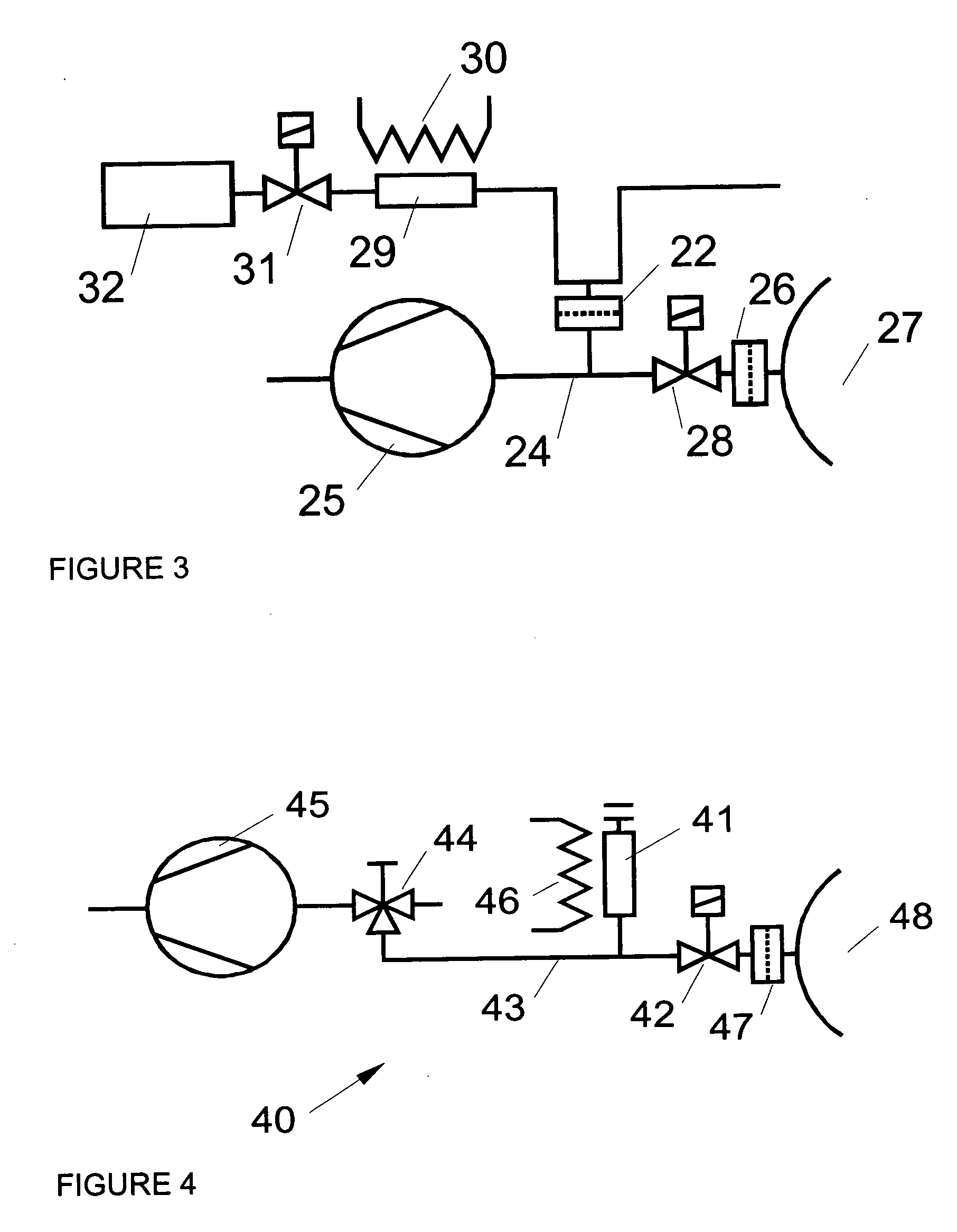Gas concentration
a technology of gas concentration and concentration chamber, applied in the field of gas analysis, can solve the problems of limiting the concentration that can occur, the concentrating power cannot be arbitrarily high, and the membrane response time of some species is rather slow, so as to reduce the pressure in the trap
- Summary
- Abstract
- Description
- Claims
- Application Information
AI Technical Summary
Benefits of technology
Problems solved by technology
Method used
Image
Examples
Embodiment Construction
[0051]FIG. 1 shows a simple prior art system 10 to transfer sample from a trap 11 in which the sample has already been retained into a mass spectrometer 12. The system is also provided with a gas supply 13, an exhaust 14, a heater 15 and valves 16, 17. Valve 16 is a leak valve that admits a small portion of the flow into the mass spectrometer (limited by the capacity of the high vacuum pumps required for the mass spectrometer). Heater 15 heats the trap 11 to release the analyte from the absorbent within the trap, valve 17 is opened to allow transport gas from the gas supply 13 to be admitted to the trap 11. This pushes the analyte out of the trap 11, as a relatively concentrated “plug” of gas, and transports it to the mass spectrometer inlet valve 16. Region 18 is normally at, or a little above, atmospheric pressure during this process. Fine control of the timing of opening of valve V2 allows the sample plug to be stopped at the inlet valve 16, if time is needed for the analysis. Th...
PUM
 Login to View More
Login to View More Abstract
Description
Claims
Application Information
 Login to View More
Login to View More - R&D
- Intellectual Property
- Life Sciences
- Materials
- Tech Scout
- Unparalleled Data Quality
- Higher Quality Content
- 60% Fewer Hallucinations
Browse by: Latest US Patents, China's latest patents, Technical Efficacy Thesaurus, Application Domain, Technology Topic, Popular Technical Reports.
© 2025 PatSnap. All rights reserved.Legal|Privacy policy|Modern Slavery Act Transparency Statement|Sitemap|About US| Contact US: help@patsnap.com



